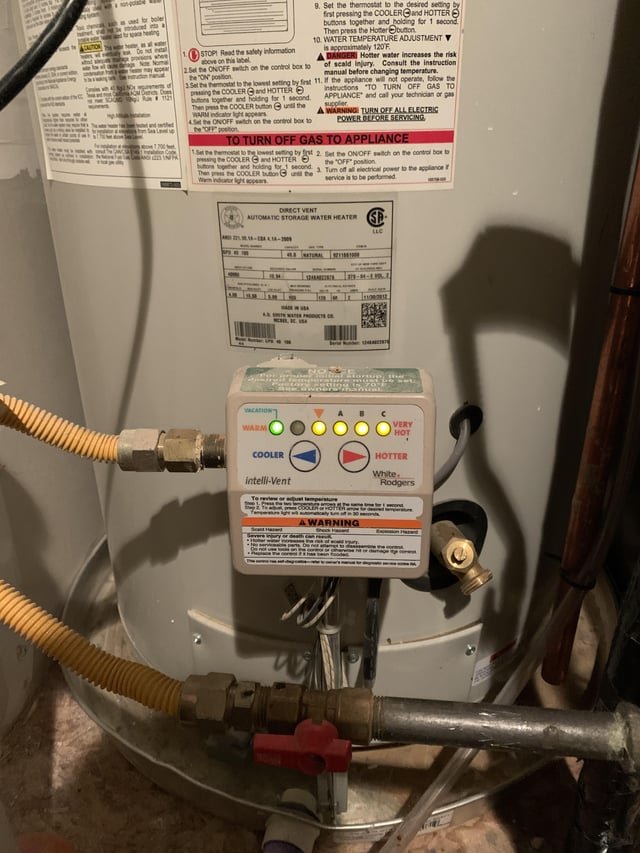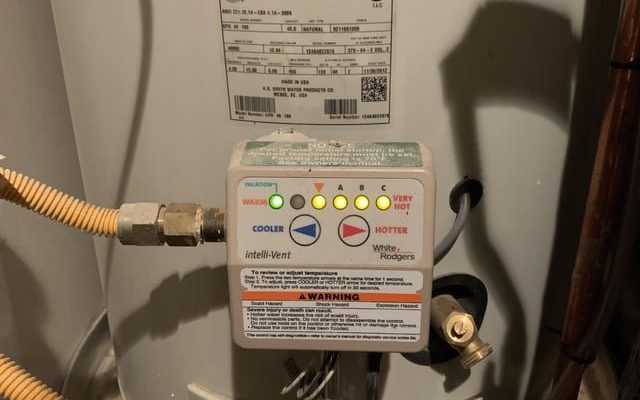
Imagine your water heater as a symphony of parts working together to provide you with hot water. The “OE” error code is like a musician hitting the wrong note. It’s a sign that something in this orchestra of components isn’t harmonizing correctly. Sometimes, you might be able to troubleshoot the problem yourself. Other times, it’s best to call in a skilled technician to ensure everything’s in tune again. Let’s dive deeper into what the “OE” error means and when it’s smart to get professional help.
Understanding the “OE” Error Code
The “OE” error code on your Kenmore water heater generally indicates an issue related to overheating. It’s like when a car engine gets too hot; the heater has safety mechanisms to prevent damage when things get too warm. In this case, the water heater automatically shuts down or stops heating temporarily to protect itself from further problems.
So, why does your heater get too hot? Well, several factors could be at play. It might be due to sediment build-up inside the tank, restricting water flow and causing the unit to work harder than it should. Think of it like trying to sip a thick smoothie through a narrow straw—it’s a struggle, and you might end up exerting more effort than you intended. This build-up can lead to overheating, triggering that pesky “OE” code.
Another possible culprit is a faulty thermostat. If the thermostat isn’t functioning correctly, it might not accurately regulate the water temperature, leading to unintentional overheating. Imagine setting your oven to bake at 350°F, but it secretly climbs up to 450°F. Your cookies might burn, and similarly, your water heater might signal an error.
Common Causes and Simple Fixes
Before you rush to call a technician, there are a few things you can check on your own. The first potential issue is sediment build-up. Over time, minerals in your water can settle at the bottom of the tank, much like dirt collecting at the bottom of a pond. This sediment layer can cause your heater to overheat, so it’s a good idea to flush the tank periodically. If you’re comfortable with a bit of DIY, you can try draining a small amount of water from the tank to see if it helps.
Next up, let’s consider your thermostat. If it seems like your heater is causing more sauna than shower, the thermostat might need a closer look. Ensure it’s set to a safe temperature—usually around 120°F is ideal for most households. It’s a bit like finding the right balance between a cozy fireplace and an overheating room heater.
If adjusting the thermostat or flushing the tank doesn’t resolve the issue, then it might be time to think about calling in a technician. Remember, when in doubt, it’s always better to be safe than sorry when dealing with water heaters.
When To Call a Technician
Alright, let’s be honest—sometimes it’s just easier to call in the pros. Here are some scenarios when you should definitely consider reaching out to a certified technician for help with that “OE” error code.
Firstly, if you’ve tried the basic troubleshooting steps and that dreaded error code keeps rearing its ugly head, it’s time to call in the cavalry. A technician can conduct a more thorough inspection, ensuring that every component, from the heating element to the temperature sensor, is functioning properly.
Moreover, if you’re not comfortable around your water heater or worry about making things worse, a professional’s expertise can provide peace of mind. Think of it like calling a mechanic when your car makes a weird noise—sometimes, it’s best to let someone with experience take the wheel.
In some cases, the “OE” error might be a symptom of a more serious issue, like a malfunctioning heating element or a wiring problem. A technician will have the tools and know-how to diagnose and fix these complex problems safely. After all, your safety and comfort are a top priority.
Preventative Tips to Avoid Future Errors
Now that we’ve discussed when to call a technician, let’s talk about how to prevent this issue in the first place. One of the best things you can do is schedule regular maintenance for your water heater. It’s like giving your water heater a yearly check-up to keep it running smoothly.
Regularly flushing your water heater can make a world of difference. By clearing out that sediment build-up, you’re helping your heater run efficiently. It’s a bit like regular oil changes for your car; it keeps internal components free of debris and ensures smooth operation.
Additionally, keeping an eye on your water heater’s performance can signal when something’s not quite right. If you notice water that’s too hot, lukewarm, or inconsistent, it might be worth investigating before it evolves into a bigger problem. By catching issues early, you can save time, money, and frustration in the long run.
In summary, understanding and addressing the “OE” error code doesn’t have to be daunting. With some basic knowledge and a bit of preventative care, you can keep your Kenmore water heater in top shape. And remember, when in doubt, calling in a technician is always a smart move. Keep those showers warm and stress-free!
